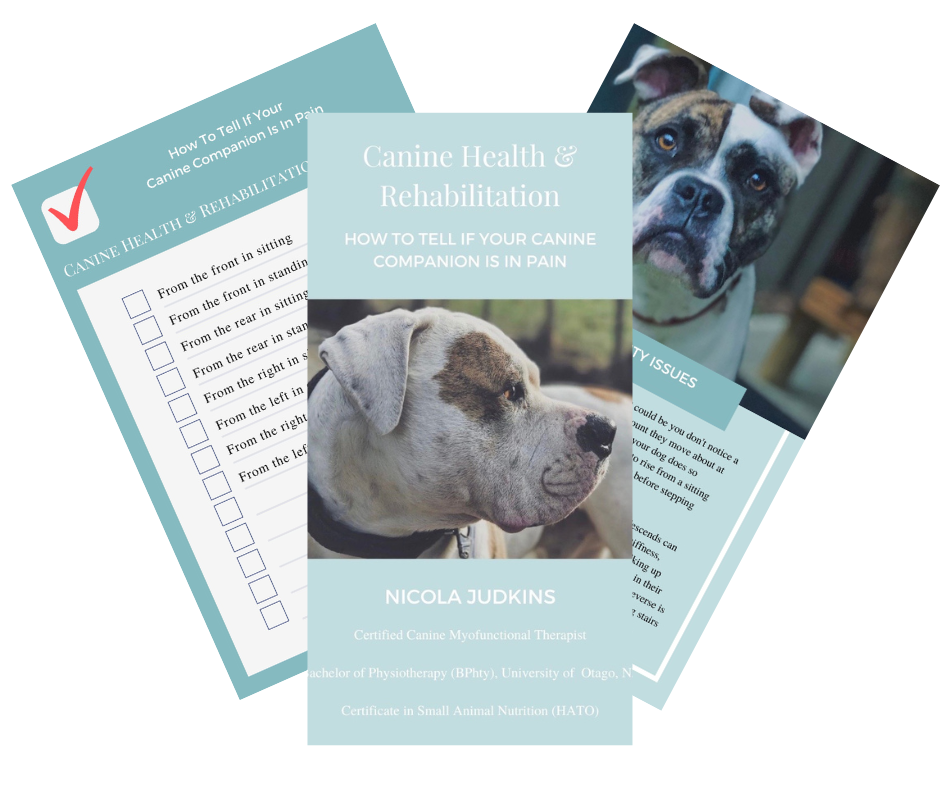
How do I know if my dog is in pain?
Dogs experience pain more often than their owners are aware. Dogs rarely vocalise when they have pain, unless it is a severe injury or illness. Even after suffering a broken leg a dog will only vocalise for a short period of time. So why is this?
All animals have an innate instinct to hide pain. In the wild, if an animal shows any sign of weakness it becomes a target for predators. Wild dogs also hide signs of illness or injury from their pack, in fear of the other pack members turning on them. Therefore it is advantageous to their survival to suppress signs of pain and injury, and to ensure an animal’s social standing in their pack (even if that pack includes humans). This instinct continues to exist even with our more domesticated pet dogs. They will hide pain in order to maintain control of the situation; however this also makes it difficult for owners of dogs to know when they are suffering.
Research shows that pain, especially if experienced over a long period, is hazardous to a dog’s health. As a dog owner I want all my dogs to remain healthy, active and strong throughout their life. And so I am always on the lookout for any signs they aren’t feeling their best. I also ensure my dogs receive regular massage, stretching and strengthening exercises to help prevent any issues occurring, that could then become chronic in time. As the saying goes ‘an ounce of prevention is worth a pound of cure’.
So how do you know if your dog is in pain?
There are a number of subtle signs that owners can look out for, some of which are listed below. The other way of picking up chronic, or silent, pain is by having a professional put their hands on your dog to assess them from head to tail.
Signs Your Dog May Be In Pain
Mobility Issues
Limping & stiffness are two of the more obvious signs your dog may be experiencing pain. You may notice they are reluctant to climb stairs, need assistance getting into the car, are slower when changing positions, have a reduced interest in going for a walk or are just less active than usual.
Changes in their Body or Posture
Changes in body posture that may indicate pain include: A rigid ‘saw-horse’ type stance, assuming a prayer position (butt in the air with the abdomen stretched out), an arched or sunken back, a dropped head or a tucked tail.
Sensitive to Normal Handling
You may notice your dog’s fur twitches when you pat them, they flinch when you rub over a certain spot or are generally less interested in being petted.
Changes in Eating, Drinking or Sleeping Habits
Dogs often sleep more when the body is trying to heal itself, or because it is simply too painful to move around. You may also notice they are reluctant to eat or drink. This can be due to a number of reasons, including a painful neck.
Signs of Agitation or Restlessness
Just as humans become agitated when experiencing pain, our dogs do as well. Restlessness may be a sign that your dog is finding it difficult to settle in a comfortable position.
Shaking or Trembling
Dogs shake & tremble for a number of reasons. Some reasons are positive, such as when a dog is excited, but it can also be associated with pain, illness, aging & stress.
Antisocial or Aggressive Behaviour
Whether it’s that your dog has stopped running to greet you when you get home, wants to spend time alone, or has developed behavioural issues, these can all be signs your dog is experiencing some form of pain.
Being More Vocal
Growling, snarling, howling or whimpering are all ways your dog may be trying to tell you that something isn’t right.
Excessive Grooming
If your dog licks itself frequently it is likely they are trying to soothe themselves. This can be related to wounds which are often obvious, but can also be a sign that your dog is suffering from pain somewhere in their body.
So, how can you help your dog feel better?
Canine Myofunctional Therapy
A holistic, therapeutic treatment that utilises massage, stretching, & rehabilitation exercises to treat pain and manage or prevent injuries. It also helps to keep your dog pain free and active as they age.
Post-Surgical Rehabilitation
Following surgery humans see a Physiotherapist to help them recover faster, ensure they are doing their exercises correctly and help them return to an active life. Your dog is no different. They require the same care to optimise the surgical outcome, and ensure they return to living their best life.
Senior Dogs
As in humans, old age in dogs can be painful as the body slows down, and muscles & joints struggle to work at their full capacity. Many older dogs also suffer from painful conditions, such as osteoarthritis. Regular massage treatments, and some simple range of movement and strengthening exercises, helps them remain active and happy in their senior years.
Purchase My eBook, ‘How to Tell if Your Canine Companion is in Pain’.
Most of us believe we know our canine companion well; however, many of us miss the subtle signs our dog is in pain, simply because we don’t know what to look for.
This guide will teach you how to identify the early signs of pain & discomfort in your dog, so you can get them the help they need to feel better faster.



